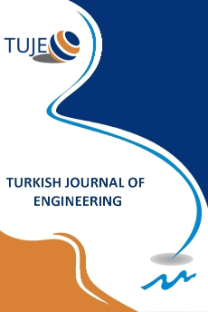An application to error and uncertainty analysis in industrial type dryer experiments
In this study, information is given about the driers commonly used in the industry and the experimental errors and uncertainties that will be encountered in the experiments using these driers are tried to be explained by using the data obtained from the experiments carried out in an 8 chambers hot oil heated stenter, which is a conveyor type convection dryer. The fabric used in the experiments is the Thessaloniki type fabric, containing 67% cotton and 37% polyester. The experiments were carried out at a drying air temperature of 160 ºC and a fabric advance rate of 23 m/h (0.383 m/s). Thus, the example of error analysis in such experimental studies is provided and criteria that may cause an error for drying systems are discussed. As a result of the uncertainty analysis, the largest uncertainty in the system occurred in temperature measurements at ±0.367 - ±0.568 ºC values and the error rate for the whole system was found to be 4.08%. In terms of conducting the experiments in real production conditions and the materials and methods used in the experiments, this study is thought to will be help researchers that working on drying systems in their experimental studies.
Keywords:
Convection Dryer, Error Analysis, Uncertainty Analysis Drying Test, Stenter,
___
- Akan A E & Özkan D B (2019). Experimental examination and theoretical modelling of drying behaviour in the ram machine. Drying Technology, DOI: 10.1080/07373937.2019.1662436.
- Akan A E, Özkan D B & Ünal F (2015). Energy and exergy analysis of hot oil heated convection dryer. ULIBTK’15 20. National Thermal Science and Technique Congress, Balıkesir, Turkey.
- Akarslan, F. (2002). Effect of textile material properties on drying performance. Msc. Thesis, University of Süleyman Demirel, Isparta, Turkey (in Turkish).
- Akpınar E K (2002). Development of a cyclone type dryer for agricultural products. PhD Thesis, University of Fırat, Elazığ, Turkey. (in Turkish).
- Akpinar E K (2006). An example of error analysis in experimental studies: error analysis in drying experiments. Engineer and Machine, 46(540), 41-50. (in Turkish).
- Basaran B, Bitlisli B O, Sari Ö, Özbalta N & Güngör A (2004). New technologies in leather drying: Heat Pump Dryers. I. National Leather Symposium, University of Ege, İzmir, Turkey, 633-648.
- Doğanay T (2009). Drying. Modern Pharmaceutical Technology, TEB Pharmacy Academy Publications, Ankara, Turkey, 17-47 (in Turkish).
- Doymaz I (2004). Drying kinetics of white mulberry. Journal of Food Engineering, 61(3), 341-346. DOI: 10.1016/S0260-8774(03)00138-9
- Güngör A & Özbalta N (1997) Industrial drying systems. III. National Installation Engineering Congress Proceedings Book, İzmir, Turkey, 737-747 (in Turkish).
- Güngör A (2013). Dryers and Drying Technologies Used in Vegetable and Fruit Drying. 11th National Installation Engineering Congress, İzmir, Turkey, 43-63 (in Turkish).
- Haghi A K & Amanifard N (2008). Analysis of heat and mass transfer during microwave drying of food products. Brazilian Journal of Chemical Engineering, 25(3), 491-501. ISSN 1678-4383
- Holman J P (1971). Experimental Methods for Engineers. McGraw-Hill, New York, USA.
- Koyuncu T, Pinar Y & Lule F (2007). Convective drying characteristics of azarolered (Crataegus monogyna Jacq.) and yellow (Crataegus aronia Bosc.) fruits. Journal of Food Engineering, 78(4), 1471-1475. DOI: 10.1016/j.jfoodeng.2005.09.036
- Midilli A (2001). Distillation of Wastewater by Natural Vacuum Technique. PhD Thesis, University of Karadeniz Technical, Trabzon, Turkey (in Turkish).
- Mujumdar A S (2006). Hand book of industrial drying. CRC Press, Lodz, Poland.
- ISSN: 2587-1366
- Yayın Aralığı: Yılda 4 Sayı
- Başlangıç: 2017
- Yayıncı: Mersin Uüniversitesi
Sayıdaki Diğer Makaleler
HONEY FORMATION OPTIMIZATION: HFO
Ali SÖNMEZ, Ömer GÜLER, Öyküm BAŞGÖZ, Seval Hale GÜLER
WIND POWER PLANT LAYOUT OPTIMIZATION USING PARTICLE SWARM OPTIMIZATION
Mustafa ŞEKKELİ, Ceyhun YILDIZ, İbrahim Çelik
İbrahim ÇELİK, Ceyhun YILDIZ, Mustafa ŞEKKELİ
REMOVAL OF COD AND SURFACTANTS FROM GREY WATER BY FENTON TYPE PROCESSES
Serkan ŞAHİNKAYA, Gamze ÖZGÜROĞLU
CLASSIFICATION OF UAV POINT CLOUDS BY RANDOM FOREST MACHINE LEARNING ALGORITHM
